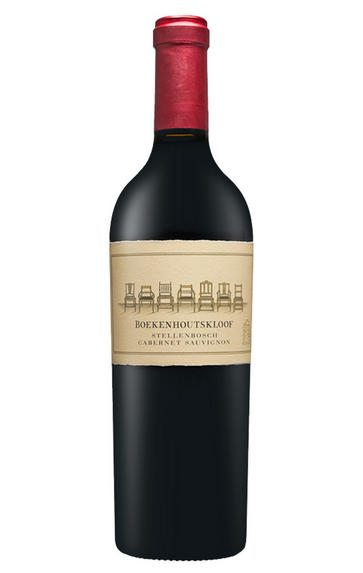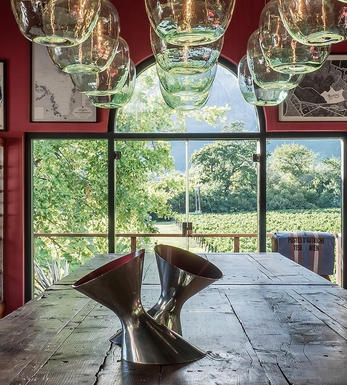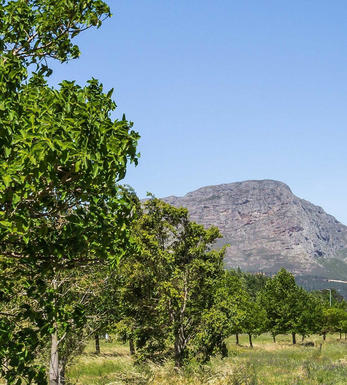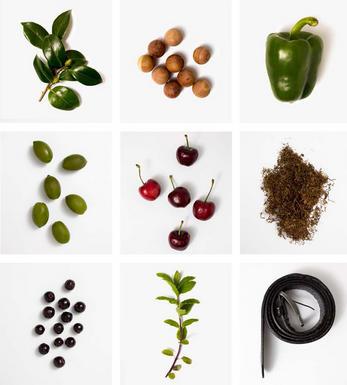
2018 Boekenhoutskloof, Cabernet Sauvignon, Stellenbosch, South Africa

Critics reviews
With a delightful and complex nose, the 2018 Stellenbosch Cabernet Sauvignon bursts with aromas of juicy black plum, currant and crème de cassis before elegant baking spices waft out of the glass with a soft mineral essence.
Medium to full-bodied, the wine displays elements of graphite and pencil shavings with notions of baked clay and dusty cherry skin before energetic acidity and firm tannins weigh on the palate. With sweet herbs and dried tobacco, the wine finishes long, complex and lingering with a firm, tannic edge.
With the Franschhoek Cabernet Sauvignon getting the same treatment and selling at the same price, my money is on this Stellenbosch Cabernet. Almost 20,000 bottles were filled after spending 22 months in 70% new French oak.
Drink 2021 - 2031
Anthony Mueller, Wine Advocate (November 2021)
Claret fans will love this restrained, cool, mineral-laden wine made from selected parcels on the Helderberg's decomposed granite soils.
This, the fifth vintage, includes 5% Cabernet Franc, which adds attractive violet and herb tones to the focused dark blackberry, cassis and pencil-lead flavours, backed by fine-grained tannins, minty-fresh acidity and gentle oak spice.
Gorgeously elegant and age-worthy. As with the Franschhoek Cabernet, it is aged 22 months in lightly toasted barriques, but here only 60% new.
Drink 2021 - 2030
Tina Gellie, Decanter.com (February 2021)
About this WINE

Boekenhoutskloof Winery
Boekenhoutskloof is one of the most celebrated of all South African wineries and was indeed voted Winery of the Year 2012 by the influential South African journalist John Platter. Created in 1776 and situated in a remote corner of the beautiful Franschhoek Valley, the estate‘s recent fame dates only from 1993 when new owners completely restored the vineyard and established new plantings of varietals such as Syrah, Cabernet Sauvignon, Grenache and Viognier.
The driving force here is winemaker Marc Kent, a maverick genius with an unswerving commitment to the highest quality in all that he does. The winery is better known for its reds, especially Syrah and Cabernet, but also makes a stunning white from the Semillon grape amongst a small range of whites.
One of the most iconic wines of Boekenhoutskloof is the famed Chocolate Block, a red blend which changes every year according to the vagaries of the vintage, but is largely based on Syrah. The source of the wine’s name remains a mystery, as the estate’s owners refuse to divulge its origin, but the key point is that the wine is sublime.

Franschhoek
Franschhoek wine region lies to the west of Stellenbosch in a fertile valley surrounded by the Drakenstein Mountains. The town of Frankschoek was founded by fleeing French Huguenots in 1688, who brought along their winemaking traditions and vines. Franschhoek's warm, temperate climate is perfectly suited to the production of powerful, saturated red wines and concentrated, fruit-driven white wines. The most prominent grapes in the region are Shiraz, Cabernet Sauvignon, Merlot and Pinot Noir.
Today it remains very much a boutique wine region with smallholding producers.

Cabernet Sauvignon Blend
Cabernet Sauvignon lends itself particularly well in blends with Merlot. This is actually the archetypal Bordeaux blend, though in different proportions in the sub-regions and sometimes topped up with Cabernet Franc, Malbec, and Petit Verdot.
In the Médoc and Graves the percentage of Cabernet Sauvignon in the blend can range from 95% (Mouton-Rothschild) to as low as 40%. It is particularly suited to the dry, warm, free- draining, gravel-rich soils and is responsible for the redolent cassis characteristics as well as the depth of colour, tannic structure and pronounced acidity of Médoc wines. However 100% Cabernet Sauvignon wines can be slightly hollow-tasting in the middle palate and Merlot with its generous, fleshy fruit flavours acts as a perfect foil by filling in this cavity.
In St-Emilion and Pomerol, the blends are Merlot dominated as Cabernet Sauvignon can struggle to ripen there - when it is included, it adds structure and body to the wine. Sassicaia is the most famous Bordeaux blend in Italy and has spawned many imitations, whereby the blend is now firmly established in the New World and particularly in California and Australia.


Buying options
Add to wishlist
Description
With a delightful and complex nose, the 2018 Stellenbosch Cabernet Sauvignon bursts with aromas of juicy black plum, currant and crème de cassis before elegant baking spices waft out of the glass with a soft mineral essence.
Medium to full-bodied, the wine displays elements of graphite and pencil shavings with notions of baked clay and dusty cherry skin before energetic acidity and firm tannins weigh on the palate. With sweet herbs and dried tobacco, the wine finishes long, complex and lingering with a firm, tannic edge.
With the Franschhoek Cabernet Sauvignon getting the same treatment and selling at the same price, my money is on this Stellenbosch Cabernet. Almost 20,000 bottles were filled after spending 22 months in 70% new French oak.
Drink 2021 - 2031
Anthony Mueller, Wine Advocate (November 2021)
wine at a glance
Delivery and quality guarantee